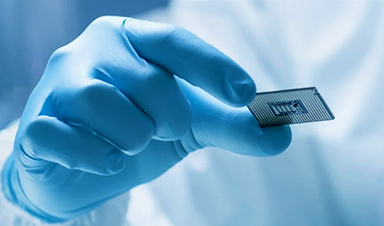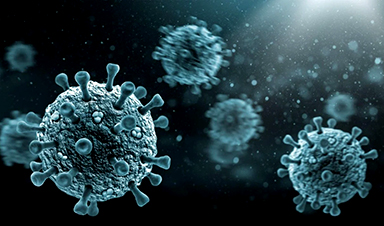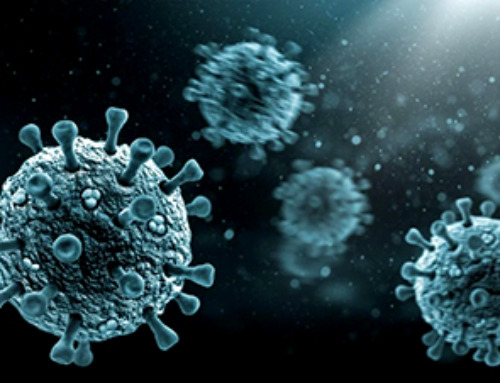Scientists from ETH Zurich and the University of Geneva have developed a new technique that allows them to observe chemical reactions taking place in liquids at extremely high temporal resolution. This innovation enables them to track how molecules change within in mere femtoseconds – in other words, within a few quadrillionths of a second.
This breakthrough builds upon prior research by the same team, led by Hans Jakob Wörner, Professor of Physical Chemistry at ETH Zurich. That work yielded similar results for reactions that take place in gas environments.
To expand their X-ray spectroscopy observations to liquids, the researchers had to design an apparatus capable of producing a liquid jet with a diameter of less than one micrometer in a vacuum. This was essential because if the jet were any wider, it would absorb some of the X-rays used to measure it.
Molecular pioneer in biochemistry
Using the new method, the researchers were able to gain insights into the processes that led to the emergence of life on Earth. Many scientists assume that urea played a pivotal role here. It is one of the simplest molecules containing both carbon and nitrogen.
What’s more, it’s highly likely that urea was present even when the Earth was very young, something that was also suggested by a famous experiment done in the 1950s: American scientist Stanley Miller concocted a mixture of those gases believed to have made up the planet’s primordial atmosphere and exposed it to the conditions of a thunderstorm. This produced a series of molecules, one of which was urea.
According to current theories, the urea could have become enriched in warm puddles – commonly called primordial soup – on the then lifeless Earth. As the water in this soup evaporated, the concentration of urea increased. Through exposure to ionizing radiation such as cosmic rays, it’s possible that this concentrated urea produced malonic acid over multiple synthesis steps. In turn, this may have created the building blocks of RNA and DNA.
Why this exact reaction took place
Using their new method, the researchers from ETH Zurich and the University of Geneva investigated the first step in this long series of chemical reactions to find out how a concentrated urea solution behaves when exposed to ionizing radiation.
It’s important to know that the urea molecules in a concentrated urea solution group themselves into pairs, or what are known as dimers. As the researchers have now been able to show, ionizing radiation causes a hydrogen atom within each of these dimers to move from one urea molecule to the other. This turns one urea molecule into a protonated urea molecule, and the other into a urea radical. The latter is highly chemically reactive – so reactive, in fact, that it’s very likely to react with other molecules, thereby also forming malonic acid.
The researchers also managed to show that this transfer of a hydrogen atom happens extremely quickly, taking only around 150 femtoseconds, or 150 quadrillionths of a second. “That’s so fast that this reaction preempts all other reactions that might theoretically also take place,” Wörner says. “This explains why concentrated urea solutions produce urea radicals rather than hosting other reactions that would produce other molecules.”
Reactions in liquids are highly relevant
In the future, Wörner and his colleagues want to examine the next steps that lead to the formation of malonic acid. They hope this will help them to understand the origins of life on Earth.
As for their new method, it can also generally be used to examine the precise sequence of chemical reactions in liquids. “A whole host of important chemical reactions take place in liquids – not just all biochemical processes in the human body, but also a great many chemical syntheses relevant to industry,” Wörner says. “This is why it’s so important that we have now expanded the scope of X-ray spectroscopy at high temporal resolution to include reactions in liquids.”
Reference: “Femtosecond proton transfer in urea solutions probed by X-ray spectroscopy” by Zhong Yin, Yi-Ping Chang, Tadas Balčiūnas, Yashoj Shakya, Aleksa Djorović, Geoffrey Gaulier, Giuseppe Fazio, Robin Santra, Ludger Inhester, Jean-Pierre Wolf and Hans Jakob Wörner, 28 June 2023, Nature.
DOI: 10.1038/s41586-023-06182-6
The researchers from ETH Zurich and the University of Geneva were assisted in this work by colleagues from Deutsches Elektronen-Synchrotron DESY in Hamburg, who performed calculations required to interpret measurement data.
News
Global Nanomaterial Regulation: A Country-by-Country Comparison
Nanomaterials are materials with at least one dimension smaller than 100 nanometres (about 100,000 times thinner than a human hair). Because of their tiny size, they have unique properties that can be useful in [...]
Pandemic Potential: Scientists Discover 3 Hotspots of Deadly Emerging Disease in the US
Virginia Tech researchers discovered six new rodent carriers of hantavirus and identified U.S. hotspots, highlighting the virus’s adaptability and the impact of climate and ecology on its spread. Hantavirus recently drew public attention following reports [...]
Studies detail high rates of long COVID among healthcare, dental workers
Researchers have estimated approximately 8% of Americas have ever experienced long COVID, or lasting symptoms, following an acute COVID-19 infection. Now two recent international studies suggest that the percentage is much higher among healthcare workers [...]
Melting Arctic Ice May Unleash Ancient Deadly Diseases, Scientists Warn
Melting Arctic ice increases human and animal interactions, raising the risk of infectious disease spread. Researchers urge early intervention and surveillance. Climate change is opening new pathways for the spread of infectious diseases such [...]
Scientists May Have Found a Secret Weapon To Stop Pancreatic Cancer Before It Starts
Researchers at Cold Spring Harbor Laboratory have found that blocking the FGFR2 and EGFR genes can stop early-stage pancreatic cancer from progressing, offering a promising path toward prevention. Pancreatic cancer is expected to become [...]
Breakthrough Drug Restores Vision: Researchers Successfully Reverse Retinal Damage
Blocking the PROX1 protein allowed KAIST researchers to regenerate damaged retinas and restore vision in mice. Vision is one of the most important human senses, yet more than 300 million people around the world are at [...]
Differentiating cancerous and healthy cells through motion analysis
Researchers from Tokyo Metropolitan University have found that the motion of unlabeled cells can be used to tell whether they are cancerous or healthy. They observed malignant fibrosarcoma [...]
This Tiny Cellular Gate Could Be the Key to Curing Cancer – And Regrowing Hair
After more than five decades of mystery, scientists have finally unveiled the detailed structure and function of a long-theorized molecular machine in our mitochondria — the mitochondrial pyruvate carrier. This microscopic gatekeeper controls how [...]
Unlocking Vision’s Secrets: Researchers Reveal 3D Structure of Key Eye Protein
Researchers have uncovered the 3D structure of RBP3, a key protein in vision, revealing how it transports retinoids and fatty acids and how its dysfunction may lead to retinal diseases. Proteins play a critical [...]
5 Key Facts About Nanoplastics and How They Affect the Human Body
Nanoplastics are typically defined as plastic particles smaller than 1000 nanometers. These particles are increasingly being detected in human tissues: they can bypass biological barriers, accumulate in organs, and may influence health in ways [...]
Measles Is Back: Doctors Warn of Dangerous Surge Across the U.S.
Parents are encouraged to contact their pediatrician if their child has been exposed to measles or is showing symptoms. Pediatric infectious disease experts are emphasizing the critical importance of measles vaccination, as the highly [...]
AI at the Speed of Light: How Silicon Photonics Are Reinventing Hardware
A cutting-edge AI acceleration platform powered by light rather than electricity could revolutionize how AI is trained and deployed. Using photonic integrated circuits made from advanced III-V semiconductors, researchers have developed a system that vastly [...]
A Grain of Brain, 523 Million Synapses, Most Complicated Neuroscience Experiment Ever Attempted
A team of over 150 scientists has achieved what once seemed impossible: a complete wiring and activity map of a tiny section of a mammalian brain. This feat, part of the MICrONS Project, rivals [...]
The Secret “Radar” Bacteria Use To Outsmart Their Enemies
A chemical radar allows bacteria to sense and eliminate predators. Investigating how microorganisms communicate deepens our understanding of the complex ecological interactions that shape our environment is an area of key focus for the [...]
Psychologists explore ethical issues associated with human-AI relationships
It's becoming increasingly commonplace for people to develop intimate, long-term relationships with artificial intelligence (AI) technologies. At their extreme, people have "married" their AI companions in non-legally binding ceremonies, and at least two people [...]
When You Lose Weight, Where Does It Actually Go?
Most health professionals lack a clear understanding of how body fat is lost, often subscribing to misconceptions like fat converting to energy or muscle. The truth is, fat is actually broken down into carbon [...]





















